to level an old house or not to level…
Hello-
I haven’t been on Breaktime since my last house-building project 8 years ago. I’m in the process of buying an old (1907) small (850 SF) in Seattle (Ballard). It’s rough and needs a lot of work, but I used to be a carpenter and worked for a firm that specialized in remodeling old homes, so I feel up to the task.
I’m interested in opinions on leveling the house. A quick read with a level on the outside of the house shows me that the walls are out of plumb and the house is not level, which is not a huge surprise given the age and the old post-and-pad foundation. Before I start doing any of the interior remodeling (especially floor tile), I’m tempted to get under the house and level it.
The problem is that I am sure the house had finished settling by 1920 or so and has been stable ever since. Normally I would just let it go and adapt the remodel accordingly, but I’m planning to put a full basement under the thing in a few years. I’m worried about dropping the un-level, fully remodeled house down onto a nice level foundation and having it all rack back to level, tearing out my hard work in the process.
Do any of you have experience with this situation, and/or some advice?
Many thanks!
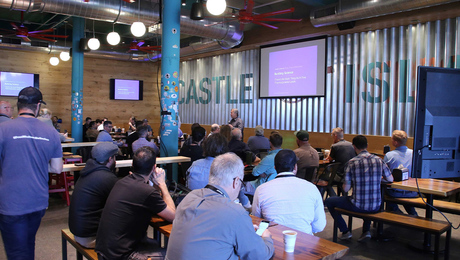
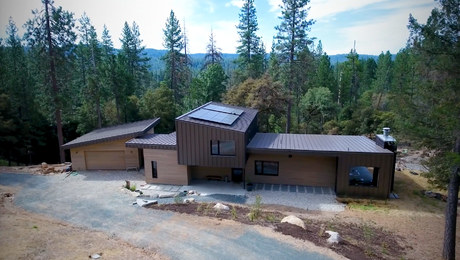
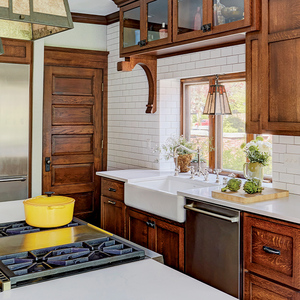
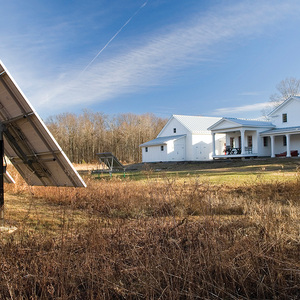

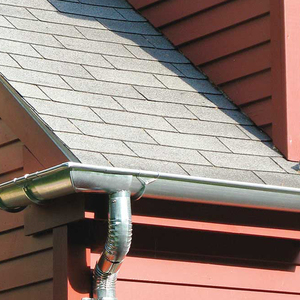













Replies
I think you need to do the big stuff first. That means the basement comes first.
Along with the basement you are most likely going to be moving and improving things like utilities, electric panel, water supply, waste, heating, etc.
So starting with those will give you something to hook up to that won't be moving.
A lot of these homes are charming but sorely need upgrading in a few ways.
If you start with the small stuff a lot of the time you end up doing it twice. Once before the big stuff happens, and once after.
I'm in an older home right now but i wouldn't trade it for a new one. Location and charm rank high for me.
Will Rogers
WE do a lot of old houses down here in Houston. There are pretty easy to level. Spend $30 on a Zircon water level. Use metal shims. If you decide to put a basement under, I would do it before anything else. The probability is that after making the house beautiful, you will need to brace it to receive the basement. At some point there will be some give or movement in the structure and you will have drywall cracks and the trim joints may show some new cracks. Probably nothing major, but it will have to be repaired. It's no fun repairing something you already made perfect.good luck
john
I think he could level it no problem. My main concern is that of upgrading utilities in the house.
With a basement he would have plenty of room to run new ducts, waste, electric, etc.
And they would all have a nice upgraded place to come off of.
I've done projects where i didn't think long term and it has always bit me in the butt.
A lot of people might think I do things the hard way when it isn't necessary, but I almost always get excellent results by going to the root of the problems and starting there.
It sounds to me like the house needs a lot more than just leveling and cosmetic work but i may be just reading that into it.
Did he ever say what shape the utilities were in?
"There are three kinds of men: The one that learns by reading, the few who learn by observation and the rest of them have to pee on the electric fence for themselves."Will Rogers
Edited 5/29/2009 7:16 pm by popawheelie
"you will have drywall cracks and the trim joints may show some new cracks."Of course, in a 1907 house, you meant plaster. What happens to lath and plaster when such a structure is straightened up?BruceT
Well, you get to perfect your trowel skills. I don't see the plaster repairs as all that big a deal. If the trim gets botched up and you split it when trying
to reset it, that's a bummer.
I'd put the basement in now. Why level, remodel, jack it back up, dig basement, lower it down, relevel, then repair all the damage to the recent remodel?
"I'm planning to put a full basement under the thing in a few years."
You are getting the cart in front of the horse. get the foundation and cellar done first unless you have an unlimited budget and don't mind wasting money.
Welcome to the
Taunton University of Knowledge FHB Campus at Breaktime.
where ...
Excellence is its own reward!
Don't think anyone's mentioned this above but if it were me, I'd put the basement in first.
Runnerguy
Thanks for the replies. I definitely hear what you are guys are saying and that would be my preferred way of doing it. The main problem is money. I'm sinking all I have into the buying of the house, and even though I'm planning to do the basement myself it's still going to cost more than I will have. The remodeling of the old part can proceed piecemeal but I don't have the cash now to pay for permitting, equipment rental, the pour, etc.
You will have to remove the roof sheathing and possibly the flooring to level ,plumb and square up the house. Sometimes you can do a fairly good job just removing the roof sheathing before jacking the floor.
I would only jack the first floot level,or as close as possible. Then if you are fortunate the walls will look closer to plumb. Anything out of square,leave it,you can't do much with it unless the roof can move back to square too.You may not have wall sheathing, many homes that old only had siding over the studs. If this is the case then sheath the wall with 1/2" ply or osb .Lay the sheets down so they go across as many studs as possible. Do a good job nailing the sheathing, the house will have no or little damage from jacking the foundation in the future.
If you had the funds then jacking the house first would be ideal. I think you will be fine going ahead and remodeling the inside first.
mike
I'm curious as to why you would remove the roof sheathing and flooring.
Read my reply to Piffin.
mike
"You will have to remove the roof sheathing and possibly the flooring to level ,plumb and square up the house."I can't imagine why you would say that. It is true in a few cases, but not that often. Since you haven't seen and studied the house, that is a preliminary assumption.
Welcome to the Taunton University of Knowledge FHB Campus at Breaktime. where ... Excellence is its own reward!
I said "possibly" have to remove the roof sheathing. I stand behind the remark as I have attempted this 4 times that I recall over the years. The only house that did not need the sheathing removed actually had no sheathing. This was a cedar shingle roof over strapping.
You can level the floor joists, that does not guarantee the walls will plumb up with it.Depends on several factors, mainly the sidewall sheathing and type of siding.If the house settled on two adjacent corners and it was about the same amount of settling, then maybe you can square up the house just by leveling and pulling the corners to plumb.
If the house settled more in one corner than the others, then it will go out of square too. The sheathing prevents you from squaring it up.The roof has to rack back to square,impossible if the sheathing does not move. It won't move if it is nailed correctly whether flat boards ( likely) or plywood which would have been installed many years later.
That is why I recommended to just level the floor and sheath the walls with osb or plywood if their was no sheathing. Many houses this old had no sheathing.
mike
Edited 5/29/2009 6:48 pm ET by mike4244
While it's true sheathing CAN stop you from pulling things straight,
I'd say your over stating your case. Most of the time jacking up and replacing rotten members goes along way towards straight, Then throw some posts in basement and your probably at the point of
diminishing returns. It is true that if someone came along after it settled and sheathes it crooked you have a problem thou.
"You will have to remove the roof sheathing and possibly the flooring to level ,plumb and square up the house. Sometimes you can do a fairly good job just removing the roof sheathing before jacking the floor."vs"I said "possibly" have to remove the roof sheathing."If your intention was to say that he might possibly have to remove the roof sheathing, then I would agree with youBut that is NOT what you said.
You said he WILL have to remove the roof sheathing.
you left the flooring as a possibility.but I still say that neither is true except in extreme cases. I've leveled and plumbed several and never had to worry about that.
Welcome to the Taunton University of Knowledge FHB Campus at Breaktime. where ... Excellence is its own reward!
does it look out of level/plumb? Do the doors swing right with no binding and no jamming in the jambs? Do the doors look right when they're closed? if so I'd be inclined to leave it the way it is and have the foundation poured out of level to match.
Well, welcome back!
A) Do the basement first.
B) Yes, you should level it, at the same time you do the basement.
C) Start a topic in the Photo Gallery forum so we can nit pick every detai... er, I mean.. share in the fun and excitement.
Old Houses Rock! =)
~ Ted W ~
Cheap Tools! - MyToolbox.net
See my work at TedsCarpentry.com
we live on a round planet, why is everyone looking for square, plumb and level.
From your comments it sounds like you are not planning on permitting this first round of work. No judgement one way or the other on that; just make sure you fully understand and build to the current codes in your earthquake zone! That will help to minimize any rework when you go legit later.
Foundation first.
A friend of mine ran into problems trying to jack his turn-of-the-last century farmhouse level (some of the ground level floors in the place were well over 0.25"/ft out).
Unfortunately, subsequent work to the bulk settling (enclosing a porch for a room, a second floor shed dormer extension, an internal bearing wall opened up with a 10' span header) had been done that accomodated the previous settling. He found that even as he pulled the post up to level, he was torquing other parts of the structure - most of which were more securely built. He ended up pulling the ripcord about halfway thorough.
You might want to take a careful inventory of windows, doors and any potential enclosures (although it's hard to imagine too many in 850sf !) and convince yourself they're going to move when you start jacking things.
I know you're short on scratch right now, but I tell you: now is the time to be moving on a big project. Six years ago I had to contact over 14 concrete outfits before I could get a stamped driveway poured. Most were no-shows AFTER WE SCHEDULED! This March I pulled an owner/builder permit for a remodel at my house. Since then I've had well over 30 subs/GCs cold-calling me looking for parts of my job - and I get a couple of mailers every single day. You may not find some great bargain - good work costs good money - but you will find good guys willing to sharpen their pencils, show up in a timely fashion and work hard.
Good luck. I love Ballard.
-t
Having done a few renos of that vintage for others, on a tight budget, I think I'd just live it now, making only the bare minimum improvements. I'd put my time and effort into earning the money needed to do the new foundation.
After living in a very small home like that for a couple of years, you may decide that it's limitation are too great to overcome, considering the amount of personal time and hard earned savings it will take to bring it up to current/future standards.
There are a bunch of compromises which attend any major renovation, many of them things which make little sense in our energy conscious time.
I know that I'd never again bust my behind like that, putting in a new foundation under an existing place, just to gain space below ground, not when I could demo the old place for very little and start fresh.
Tear downs of fifty-sixty year old homes are very common in the area where I'm living now. If your neighborhood will support a modern, higher end home, it's worth considering.
I would most certainly level the house prior to doing any of the current renovation.
850 is a small house so it shouldn't be too hard to get the floor system jacked up to an adequate level situation.
Your plan on doing the basement at a later date (because of money issues) seems difficult and risky (you might damage a lot of your newly renovated work) but it might be workable if you create a clever plan for the cribbing of the structure when you begin your dig.
Do you have a plan for how you are going to dig and create the basement?
I'm in the process of buying an old (1907)
That's not old, it's hardly broken in :-)
My circa 1780 house is not level or plumb or straight and will never be. We moved in 15 years ago and jacked up the sags in the first floor framing as much as we dared. Instead of one dining table leg sitting on a brick on edge (4") to make it stop rocking, we got it to a flat brick.
Some people call it charm, but it would be nice to be able to use a level once in a while. We added on a new addition and the transition looks a little funny in spots.
I'd leave it until you can do the foundation.
Edited 5/29/2009 11:12 am ET by smslaw
Oh ... I thought you meant LEVEL it ... like with a bulldozer ... what I'm wishing I did with mine right now ...
Oh ... I thought you meant LEVEL it ... like with a bulldozer ... what I'm wishing I did with mine right now ...
Roger that. Renovation projects can be very seductive and in the end...
I had a client who wanted to reno an old farm house. Everyone had told him to burn it and bury it. He wanted to save it because he saw a house, rather than a money pit.
So when he finally presented his ideas to me, he tried to low ball the project as a weekend place, nothing special. I said sure, if you're willing to live in it with just some basic improvements, it can be done inexpensively.
Then he nickeled and dimed his way through it with me never knowing what he'd want next. But business was slow for me, he had money, and I'd already given him my advice on the scope of work which was appropriate, so I kept doing what he requested without arguing against it.
As things progressed his wife wife fell in love with the area, but not the old house. She wanted to live in the country full time so he got the itch to build a new home.
So, while I completed the old one, I designed a new, much more lavish home for them, to be built nearby, on the same farm property.
Instead of being a typical old farm house, it was a great, modern country home with a high cathedral ceiling and a massive stone fireplace. Lots of glass, a master suite, a great kitchen, three car garage, spiral staircase.
They loved the design so we began to build it, soon finishing the last of the many projects on the old farm house which he now intended to rent out, after the new place was completed.
When we finished the big new house...for almost the same price as the old one...he was shocked, in complete disbelief...for weeks.
"Why didn't you stop me?" he said when he'd finally come to grips with where his money had gone, on the old place.
"Because you started out with a sane plan, but kept changing the scope of things, week by week. So maybe you should ask yourself that question".
"It was my wife. I had to convince her that we should get out of the city on the weekends. First she didn't want me to spend a lot on the old place, just fix it up a little. Then, as the weeks went by, she kept asking me to make it nicer...new windows, new siding, on and on."
I had to chuckle, knowing something of their relationship. It was a lesson that more than a few people have learned.
In my opinion, if you're a tradesperson, have the skills and the knowlege to design and build a new home, why would you live in someone else's old place?
I've lived in two homes which I built for myself, both small but adequate places. They were far better homes than any others I've lived in...for me, even those I've remodeled extensively, like the current one.
They were better because they were completely my creations. It's like living inside the best of myself, all the time.
Looking forward to my next new country home...of my design.
Edited 5/30/2009 9:04 am by Hudson Valley Carpenter
I agree with the basement first idea, but the first thing is to get a laser level and figure out where the settling is. Depending on how the house has settled--and how the understructure is framed--your jacking project may be very, very easy. Best case is piers and girders, because you can simply place a jack on a pier next to a post, and jack the girder. Worst case is a perimeter concrete foundation with joists directly on mudsills. To jack that you need to get some beams in place and will have to punch out concrete. Once you start doing that you might as well do the basement.
I have a bunch of jacks under a house right now. It's a situation where the perimeter is fine but the piers were poured on uncompacted grade and have settled over time. I have 1-2 jacks on each pier and am raising them slowly. Hardest part was to round up enough big jacks.
Why level the whole house? Just dig the basement/foundation to level, frame the new floors to level leaving the outside of the house unlevel and use the attic as the sponge then you will not disturb the roof etc. Just done this to a 1750's house in Marblehead MA looks great all wonky from the outside (adds charcter)but bathrooms and laundry do not creak and move.
Thanks for all the suggestions. After thinking about it for a few days (and getting over my initial creative excitement- I just signed the purchase agreement a week ago), and reading all the comments, I've come up with a bit of a new plan. I started thinking about how I like small houses and that although adding a basement would double the space, even if I made it a nice daylight basement it's still going to be a basement. Those additional 850 SF of living space are not going to be appealing as 1700 SF that are all above-ground. So, is it really worth the trouble of putting in a basement? Probably not. Better to leave it what it is, a small old house like all the other old small houses in Ballard.
The existing foundation, although post and pad, is in surprisingly good shape. If I was going to live in the house forever I think I would just tie it together better and leave it. For resale, though, a new up-to-code, earthquake-ready perimeter foundation would be a great selling point. Because the house is on a good beam/girder system the lifting would be an easy job. I could just reorganize the beams a bit so that I can cantilever them from cribbing underneath the house, with just enough room that I can pour the footing. Similarly, I wouldn't have to lift it very far, just enough to get the concrete in the forms, etc. With a small lift like that the chances of racking the house would be greatly lessened, so I could proceed with at least some of the remodel now and worry about the foundation in the future.
As far as the leveling, I think I'm going to have to wait until I can get in there and really figure out where the house is at. The doors that I tried opened and shut fine, same with the windows, but there is at least one point (the corner post of the front porch and the porch sidewall) where things are very visibly wonky. As some of you have said though, wonkiness can be appealing in an old house.
Re: renovation vs teardown, I am firmly in the renovation camp, even if it is more work than building new. Especially in a place like Ballard, where there is so much tearing down and building condos or oversize new homes, I really want to restore this house.
Thanks again for the discussion. I moved down here from Fairbanks AK a couple of years ago and left all my builder buddies behind...so I don't have anyone around here that I can bounce ideas off of, a process that I find really helpful. I'm going to post a couple of pics over in the photo gallery.
"Re: renovation vs teardown, I am firmly in the renovation camp, even if it is more work than building new. Especially in a place like Ballard, where there is so much tearing down and building condos or oversize new homes, I really want to restore this house."I'll bet much of the woodwork is redwood, isn't it? I like those old cottages, especially the craftsman ones.
BruceT
Re: renovation vs teardown, I am firmly in the renovation camp, even if it is more work than building new. Especially in a place like Ballard, where there is so much tearing down and building condos or oversize new homes, I really want to restore this house.----------More power to you! I love the old houses in Ballard because it reminds me so much of my home town - a few clicks south in Astoria. Lots of old Scandahoovian places in funky mismatched neighborhoods - it brings peace to the soul. I spent a lot of time and energy fixing up an old (for this area - 1935) place in Bothell. I like to think of it as "teardown proofing." Fix it up so that it's nice enough to economically punish anyone that buys it to tear it down!Earthquake proofing is a good idea. Because of all the good work the Phinney Ridge association has done, a lot of folks in your neck of the woods are savvy to the value of an earthquake retrofit.-t